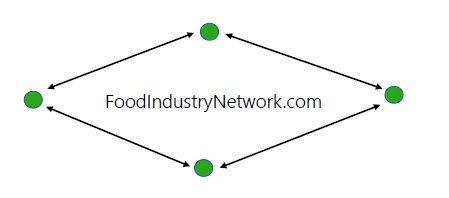Farm building code updates will drive insurance increases

An unintended consequence of planned upgrades to Canada’s National Farm Building Code (NFBC) may be higher farm insurance rates.
Read Also


New online decision-making tool for species at risk
An online tool to help farmers choose the best options to help preserve species at risk and their habitats is coming to Ontario in 2025.
That’s because, regardless of how the insured structure is built, if destroyed it will have to be rebuilt to the new and more complex code.
Why it matters: Rising insurance premiums will affect anyone who builds barns to the updated national farm building code and also owners of existing livestock facilities.
An Ontario-based member of the Canadian Farm Building Association board of directors advises farmers to resist the temptation to under-insure if they feel ill-equipped to pay the increase.
“Insurance companies don’t have a choice; they have to rebuild to the building code (after a loss),” Ken Worsley, chief operating officer of Nova Mutual Insurance Company told Farmtario recently.
Worsley made contact after publication of an article detailing planned farm-related upgrades to the National Model Codes, including the farm building code but also those related to fire safety, plumbing and electrical safety.
“This particular issue has huge impacts for insuring these barns going forward as we will need to place higher limits on these barns in order to replace them when needed due to a loss,” he said in an email.
Speaking from Nova’s Jarvis-based head office, from which the company insures farms across Ontario, Worsley said farmers who plan new buildings must be aware of how the code changes will add to the cost of such components as trusses, bracing and fire separation areas.
The NFBC hasn’t changed since 1995. Since then, there have been huge transformations in knowledge about potential loss due to a changing climate and to the scale of the average farm building. From the perspective of insurance companies, this has created an environment in which many farm losses are now “curated” through “facultative reinsurance” strategies.
In the past, said Worsley, insurance companies operating in Ontario typically had enough financial capacity to cover whatever farm losses were incurred by their clients in any given year. This is no longer the case.
Nova Mutual can handle a farm loss that calls for a $9-million payout to replace what was insured, he said. Above that, it calls on specialized reinsurance companies to cover the remainder.
“In Ontario, there have been several (barn) fires this year that have pierced that facultative reinsurance barrier,” he said.
He estimates the average replacement cost on a Canadian dairy farm, which he said continues to follow a trend of fewer total farms coupled with significantly larger land base, cow numbers and building size, at $20 million. Some run as high as $60 million.
Trying times
Worsley says the cost to insurance companies for facultative reinsurance has risen significantly “due to catastrophic events (over the) last four years.” Already, farm clients have possibly seen these increased costs passed to them in the form of higher premiums.
With the updated NFBC coming into effect, premiums will almost certainly continue to rise. Worsley describes it as the insurance companies’ continual race to maintain their ability to pay out for potential losses.
“If everything was insured to (full replacement) value, we wouldn’t have to take a rate increase for five years because we would have enough premium to cover it,” he said.
But any new construction that takes place after April 1 requires an estimated 20 per cent more in costs for design, material and labour, according to Stonecrest Engineering’s Bram Van den Heuvel, who was interviewed for Farmtario’s earlier article. That means insurance companies won’t be able to bankroll full replacement value without raising their rates.
“This isn’t a money grab by the brokers. This isn’t a money grab by the (insurance) carriers,” said Worsley. “It’s just the insurers recognizing that they need to replace to the updated code, and they need to charge the premiums (necessary) to cover that.”
Be aware
He advises farmers to be proactive. That doesn’t mean taking a fine-toothed comb to their policy and determining where they can avoid maintaining coverage.
“We don’t want people suddenly to start under-insuring their farms,” Worsley said. “We don’t want people to have to go to (a farm lender) and say ‘I need to borrow another $1 million’ (to pay for replacing the elements from which insurance was removed). That’s not what we want for their insurance experience.”
Instead, the veteran insurance executive says farmers should “encourage (insurance company representatives) to come and visit your farm.”
Most farm insurers have loss prevention specialists who can make recommendations, based on a farm visit, for measures to prevent or mitigate potential losses. These recommendations may seem inconsequential and inconvenient to some farm owners but they are based on available data about the causes of insurable losses.
And when a farmer follows through on recommendations within the suggested timeline, “the underwriter’s pen will get a little sharper” in highlighting acceptable risks that the insurer can include in the policy.
Worsley added that most farm insurers in Ontario work with a company selling electronic monitoring systems. Examples include PrevTech, Maximus and FarmGuard. He encourages farmers to investigate possible discounts in insurance rates if they utilize one of these systems.
And if a farmer is aware of other loss mitigation technologies, “make sure your (insurance) broker is also aware of it.”
Source: Farmtario.com

